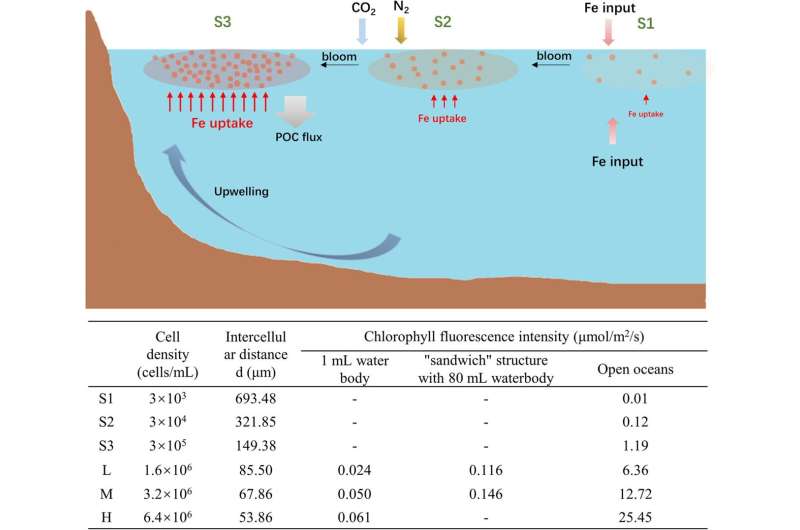Exploring relationship between iron uptake patterns and cell density in Phaeodactylum tricornutum

Iron concentration limits the growth of phytoplankton in extensive high nutrient low chlorophyll (HNLC) regions of the ocean.
In a number of large-scale in-situ Fe enrichment experiments conducted in well-characterized HNLC regions, diatom-dominated phytoplankton blooms were observed, accompanied by a considerable CO2 drawdown in the ocean surface layer and substantial carbon export to sediments.
A research team led by Wang Guangce at the Institute of Oceanology of the Chinese Academy of Sciences (IOCAS) aimed to elucidate the relationship between iron uptake pattern and cell density in Phaeodactylum tricornutum, a representative marine diatom.
Related findings were published in BMC Biology.
"Although the iron uptake rate of diatoms largely determines the magnitude and longevity of diatom blooms, the underlying mechanisms regulating iron uptake remain unclear," said Wang.
The researchers found that cells could upregulate the iron uptake protein to facilitate iron assimilation under high cell density, and the chlorophyll fluorescence derived from neighboring cells acted as the signaling factor in this process.
This finding provides novel insights into biotic signal sensing in phytoplankton, which can help to elucidate the underlying mechanisms of marine diatom blooms.
In their another study published in Algal Research, the researchers constructed the ferritin overexpression and silence strains in Phaeodactylum tricornutum to explore the role of ferritin in the morphologic transformation.
Results showed that the formation of oval cells was accompanied with enrichment of ferritin in Phaeodactylum tricornutum. The ferritin overexpression in marine diatom has a close relationship with morphological transformation from fusiform to ovoid morphotype, after which they enter a resting stage, accompanied by abscisic acid accumulation.
This study improves understanding of molecular processes in diatom resting cells/spores' formation and suggests that ferritin accumulation may improve the sequestration of photosynthetically fixed atmospheric CO2 into the deep sea.
More information: Xuehua Liu et al, Chlorophyll fluorescence as a light signal enhances iron uptake by the marine diatom Phaeodactylum tricornutum under high-cell density conditions, BMC Biology (2021). DOI: 10.1186/s12915-021-01177-z
Xuehua Liu et al, Formation of resting cells is accompanied with enrichment of ferritin in marine diatom Phaeodactylum tricornutum, Algal Research (2021). DOI: 10.1016/j.algal.2021.102567
Journal information: Algal Research , BMC Biology
Provided by Chinese Academy of Sciences

















